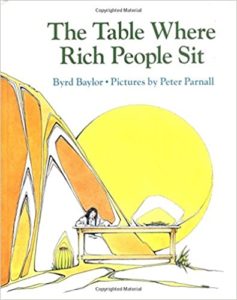Talking Frankly with Our Middle Grades Kids

We are living through a shared common experience. Global pandemic. It highlights our connection to each other in this world. We are united as a community, as a nation, and as global citizens.
The life lessons that are unfolding often parallel lessons that we believe are important in each of our classrooms – a sense of community, the necessity for kindness and inclusion, and the fact that our similarities and differences are something we should celebrate. Collectively, we are scared, we are hopeful – we are in this together.
Start by Building a Classroom Community
And so it is at the beginning of each year in our classrooms. We build a community and we model this community as an extension to the world.
Helping kids to recognize the power of story and the importance of communicating and sharing ideas about themselves and about the world are some of the most important work we do. Allowing students the opportunity to read, talk and write about issues that are important to them helps to foster a sense of belonging.
To do this work in my fifth grade classroom we start each year by reading Mem Fox’s Whoever You Are. In this beautifully crafted book, she shares her ideas about humanity. When she talks about children from different parts of the world and from different backgrounds she says, “inside their hearts are just like yours & their hurts are just like yours.”
We post this quote and revisit these words all year long – with every text we read, and especially when we embark on hard conversations. We use this as a touchstone to be reminded that our experiences in life may be different, but what is inside of each of us is the same – our hopes, our joys, our sorrows are shared. (If you teach older middle schoolers you might explore other book options.)
Continue to Use the Read Aloud to Examine Social Issues
Reading is one of the best ways to introduce and to share different life experiences. Rudine Sims Bishop talks about books as “mirrors, windows and sliding glass doors” and these metaphors are powerful ways in which to view the world. Using read aloud can help students to feel that they are seen in the “mirror” moments and that they are valued.
Equally as important, reading stories helps to expose students to experiences that are different from their own. These “window” moments help them to understand, admire, and empathize. The “sliding glass door” between these experiences encourages the opportunity for students to see that our worlds connect to each other and that we can move between these mirror and window moments, often within a single shared reading experience and always throughout our lives.
My favorite read alouds that build emotional empathy are:

• A Different Pond by Bao Phi
• Taco Head by Viola Canales
• The Stolen Party by Liliana Heker
• Fly Away Home by Eve Bunting
• Last Stop on Market Street by Matt de la Pena
• Wonder by RJ Palacio
As we read together, we keep a focus on those things that unite a community and build empathy: acceptance, kindness, grace, and the power we have to make a difference. We hold a shared message in our community – I see you, I value you, you are not alone.
In addition to using read aloud, some compelling stories are told through video. HumansofNewYork.com, NPR’s “This I Believe,” and the teacher-friendly Literacy Shed videos offer stories of humanity that can be shared in the same way that we share these stories in print.
We also see and share real world human experiences, adding another resource for teachers to use in this work. We hold to our classroom community values as we talk about what we have heard. This leads us into one more way to explore social issues in the classroom: conversation.
Foster Important Conversation
Conversation builds relationships and understanding. CON (together) is the most important part of this word. We use “con-versation” to build upon the shared text and video experiences. These conversations can be hard – hard to hear differing points of view and hard to respond to those views with a stance that seeks insight, shows respect, and honors a need to be heard.
I have found that during our conversations students need scaffolds to help them to verbalize their ideas in constructive ways. Some of the best that we use are from Kate Roberts and Maggie Beattie Roberts called “Critical Reading and Thinking Tools to help Students to Read the Word and the World.”
The talking stems they offer center on perspective, position, and power. Here are some of my favorites:
Perspective
• What perspectives are in this text?
• What perspectives are not in this text?
• What do you feel is normal here? Not normal?
• Does this match your perspective?
Position
• What perspective, position, or people are valued in this text?
• What perspective, position, or people are devalued (marginalized) in this text?
• What readers might feel like insiders? Like outsiders?
Power
• Who has power in this text? Who does not have power?
• How is power shown?
• Whose voice is heard? Not heard?
• Does this author use his or her power to repeat or break stereotypes?
When reading books that challenge our thinking, talk helps us to evolve. Talking about texts that align to our own beliefs, while considering differing beliefs and values of others, is massively emotional.
In everyday life, middle graders often find these experiences baffling and frustrating. Providing the opportunity to read and follow guided inroads – and to constructively talk about what readers are thinking – helps them to recognize that their voice matters and so do the voices of those that may not parallel their own outlook or experience.
Using a grand conversation is one of the best ways to create this community. As an entire class, this is where ideas are shared and supported. First, in the Grand Conversation, students call upon evidence from the read aloud text, using talking stems that help to verbalize our ideas respectfully.
Similarly, students share ideas and experiences that add insight to the conversation. These conversations are places for students to learn to express themselves, to push back when they disagree and to open their minds to see things from a different perspective.
Use Our Voice as Writers
Finally, and perhaps most importantly, students benefit by expressing themselves in writing. In doing so, there is a literal and symbolic proclamation to share who they are with the classroom community as well as the community at large. Some of the most impactful writing that happens during our time in fifth grade includes:
• Composing Six Word Memoirs, theme based reflections (pandemic tips here)
• Crafting Where I’m From poetry, influenced by George Ella Lyon
• Writing our own This I Believe essays after reading NPR examples
• Creating notebook entries like those introduced by Ralph Fletcher in A Writer’s Notebook – chapters “Fierce Wonderings” and “Writing that Scrapes the Heart”
• Crafting Heart Maps that are inspired by Georgia Heard (more examples on Google Images)
Putting It All Together
I know that every classroom is different in how a community gels. These moves I share with you – a combination of reading, talking, and writing, allow for a more fertile ground to consider each other’s points of view when tackling controversial issues.
It is not that we always agree, it is that we value our differences and our shared experiences. When Mem Fox talks about people all over the world, she says,
“Joys are the same, and love is the same. Pain is the same, and blood is the same. Smiles are the same and hearts are just the same – Whoever you are, wherever we are, all over the world.”
Sharing in our reading, in our conversation, and in our writing unite us in the mission to understand the complexities of humanity. Most importantly, we unite around the understanding that we are responsible for each other. Now, more than ever, that lesson needs to be heard.
Citations
Fletcher, Ralph J. A Writer’s Notebook Unlocking the Writer within You. HarperTrophy, 2003.
Fox, Mem, and Leslie Staub. Whoever You Are. Houghton Mifflin Harcourt, 2017.
Roberts, Kate, and Maggie Beattie Roberts. “Critical Reading and Thinking: Tools to Help Students to Read the Word and the World.” 2018. Source
Bishop, Rudine Simms. “Mirrors, Windows and Sliding Glass Doors.” Reading Is Fundamental, 3 Jan. 2015, https://scenicregional.org/wp-content/uploads/2017/08/Mirrors-Windows-and-Sliding-Glass-Doors.pdf
Nancy Costanzo is a fifth-grade teacher in the Ramsey Public Schools in New Jersey. Her instructional approach has been greatly influenced by Gravity Goldberg, Pam Koutrakas, and staff developers from the Teachers College Reading and Writing Project.
Many authors and consultants come to study in Nancy’s classroom to refine their instruction approaches in the humanities (including Patty McGee) as she developed her work around feedback. Prior to entering the classroom, Nancy worked in pharmaceuticals – in sales and in curriculum development for global sales training. She tweets @NancyCostanzo2. Read Costanzo’s earlier MiddleWeb article, “Using Talk about Texts to Grow Conversation Skills,” here.




































